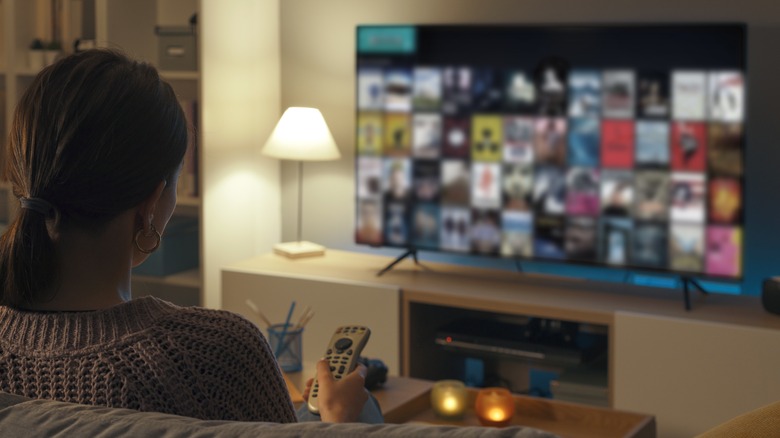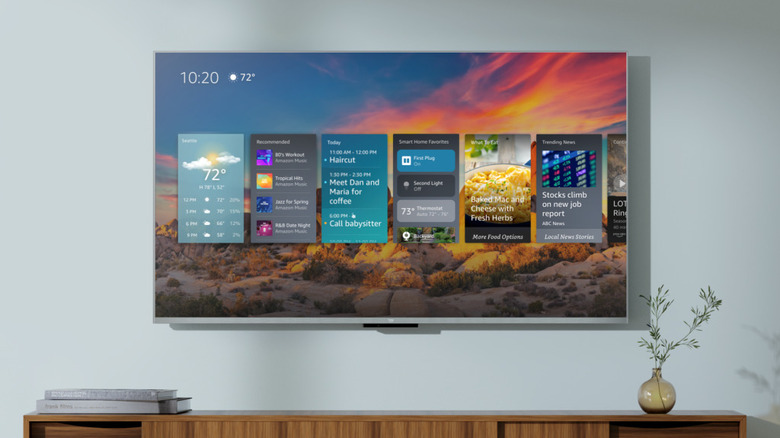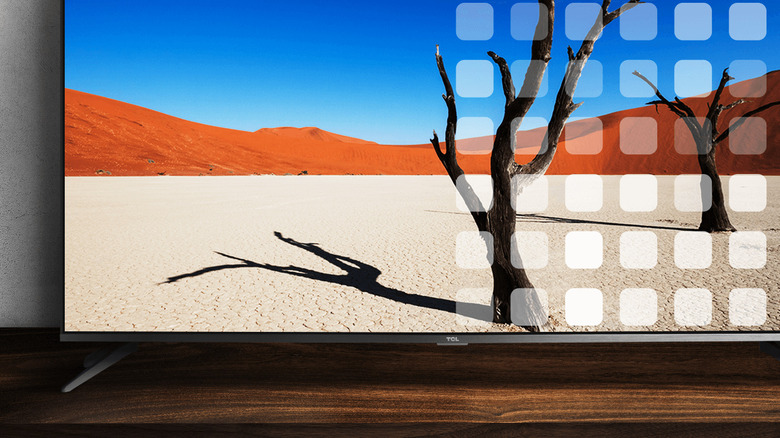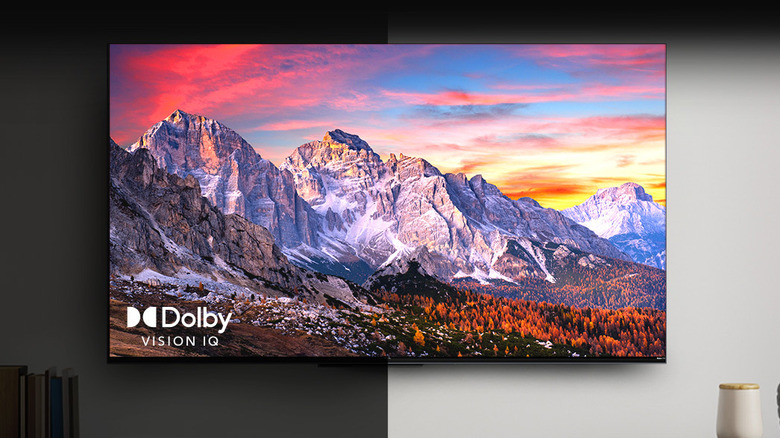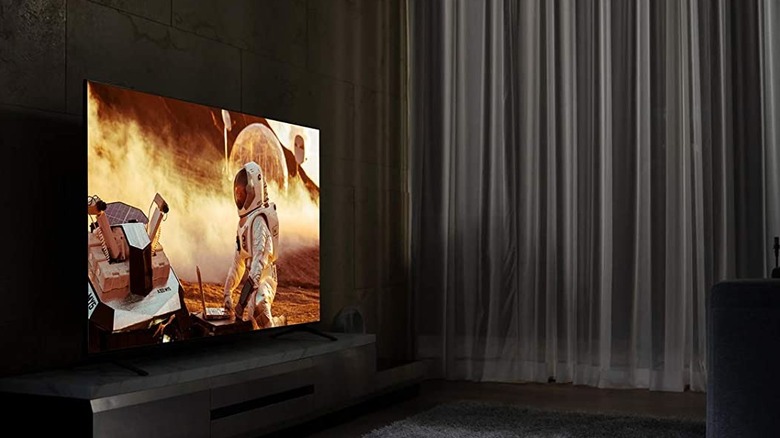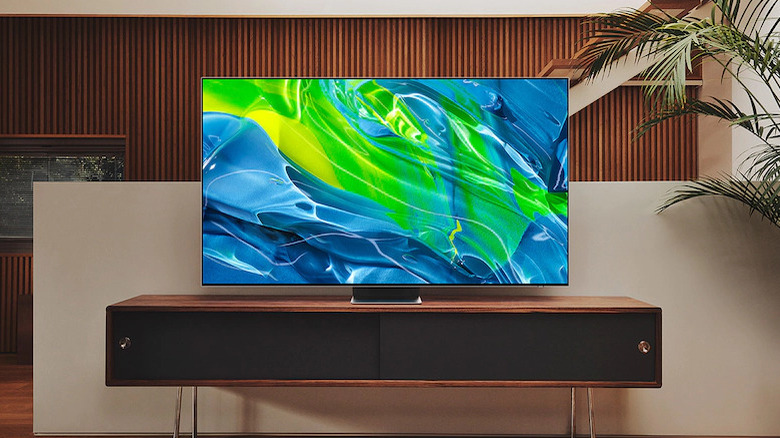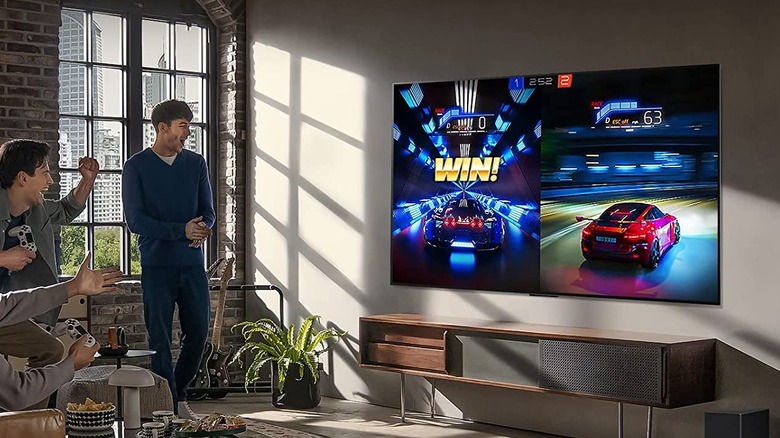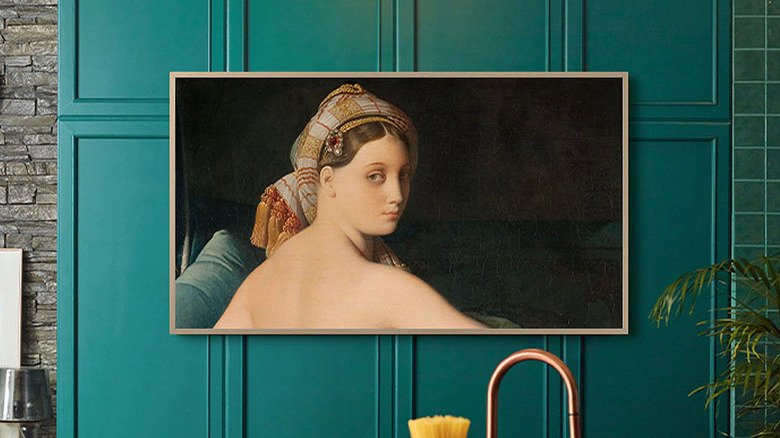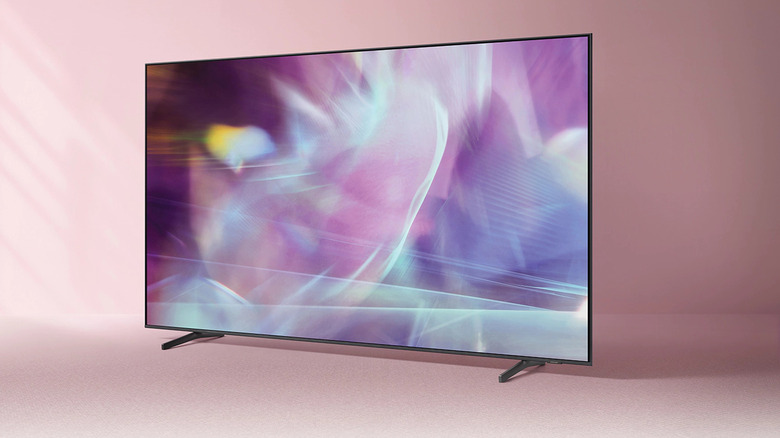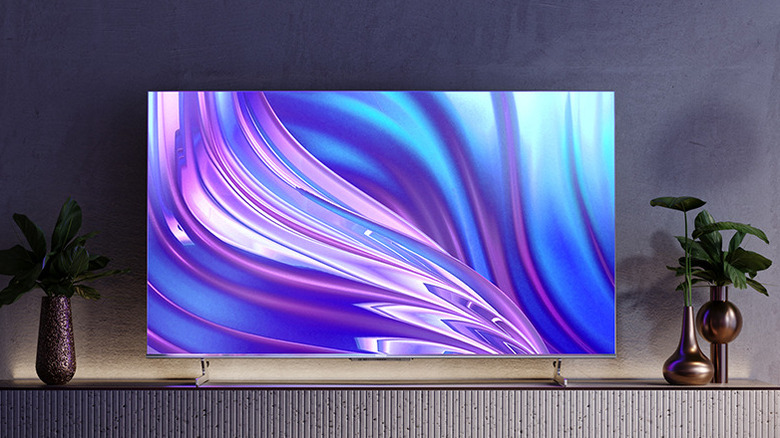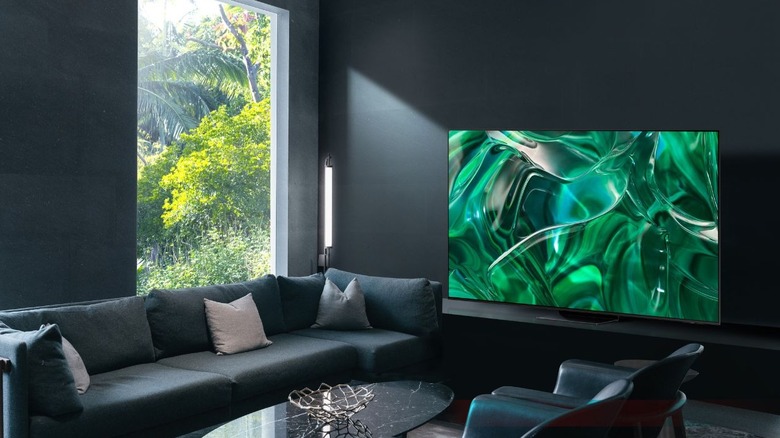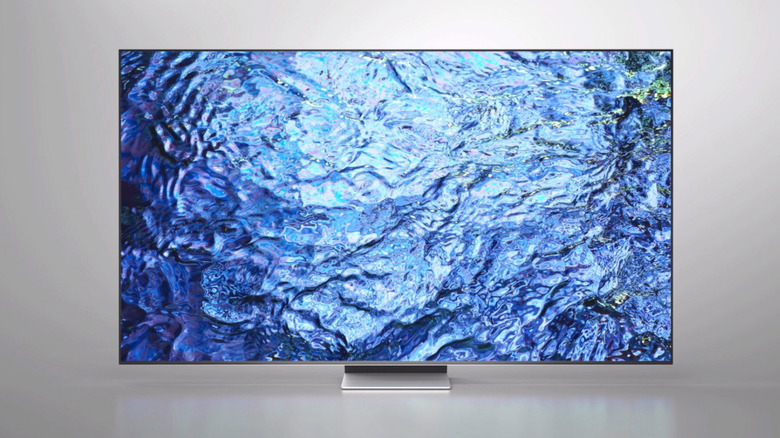The Best Smart TVs Available In 2023 (All Price Points Included)
We may receive a commission on purchases made from links.
Shopping for a new TV is never easy, with competing standards, buzzwords, screen technologies, and sizes competing for your attention. Deciding was difficult enough in the days of CRTs or the early days of flat panel TVs. The decision is further complicated, with most TVs running a smart operating system to handle streaming video, music, and other types of apps.
It's hard to find a TV that doesn't have smart functionality, with several operating systems now available. Some of these, like Google TV, are open and available for other manufacturers to use on their own TVs. Amazon's Fire TV comes on its streaming devices, TVs, and is also used by a few other manufacturers. Samsung uses Tizen, an open-source project from The Linux Foundation, although Samsung is the only manufacturer using it currently. LG has webOS, which comes on every LG Smart TV and is licensed to a few other device makers. Roku also makes a Smart TV platform, which powers its streaming boxes, TVs, and powers TVs from other manufacturers.
All of these smart platforms come with design decisions that change how you interact with them, which apps you can use, and which extra features you can use. They all also have different UI, which is an important consideration as you will be staring at it every time you turn your TV on. To help with your buying decisions, here's a list of the best smart TVs in 2023 that will suit every budget.
Best Amazon Fire TV: Amazon Fire TV Omni QLED
Generally speaking, Amazon's Fire TV operating system is good for Amazon Prime subscribers, as they will be able to find all of the perks of membership front and center. The platform surfaces Amazon-hosted content first, even if you search for something that Prime Video doesn't have access to. The main screen is split with content ads on the upper half, with the bottom half comprising a menu strip with settings, account, and often-accessed app icons and a checkerboard of content suggestions below that. Moving the cursor over any app changes the suggestions to recently watched or promoted shows on that streaming service.
Whatever your feelings are about Amazon, the TV's hardware is top-notch. The Amazon Fire TV Omni QLED comes in five screen sizes between 43 and 75 inches, priced to move with the 43-inch costing $450, and the 75-inch priced at $1,099 as of this writing. We liked its bright and colorful picture, thanks to the QLED panel, which uses quantum dots to improve color accuracy. The remote control has voice control thanks to Alexa, although it doesn't have a dedicated Input switching button. That's handled from the home screen or by asking Alexa to change to the required input.
The 4K QLED panel used has local dimming and decent HDR performance. It has three HDMI 2.0 ports, one HDMI 2.1 port with eARC, Ethernet, optical out, WiFi, a variable refresh rate with a 60 Hz maximum, Dolby Vision IQ, and HDR 10+ adaptive support.
Best Google TV: TCL Class 5-Series
Google's latest smart TV operating system is Google TV. It started to replace Android TV near the end of 2020, and now it is the main Google-backed smart TV platform. The company doesn't make any of its own TVs, so sets like this range from TCL are the only places to use it. Google says it was designed to match its ethos of Search with an easy way to browse and find out what you want to watch next. Asking Google Assistant things like "find action movies" will bring up a list of recent and highly scoring titles in that genre. The big thing to look out for is if the device running Google TV has Netflix, as not every TV, projector, or streaming box is compatible.
The TCL Class 5-Series with Google TV does have Netflix so that you can binge-watch all your favorite shows on the 4K QLED screen in color-enhanced quantum dot glory. It also supports Dolby Vision, has up to 60 local dimming areas, and has always-on Google Assistant, so you don't need to pick up the remote.
It starts from $600 for a 50-inch screen, and goes up to a 75-inch screen at $1,300. The screen has a variable refresh rate from 48 Hz to 60 Hz at 4K resolution, three HDMI inputs, one with eARC support, optical audio output, and AI upscaling for watching lower-resolution content.
Best Roku TV: TCL Class 6-Series
Roku is one of the leading manufacturers of streaming boxes and also licenses out its Roku OS to device manufacturers so they don't need to develop their own software. It's one of the most mature smart TV platforms, with an easy-to-navigate UI that shows the user's installed apps by default. TVs like this one running Roku OS can use A/V Sync when paired with Roku's Streambars and speakers to keep dialogue matched up with the on-screen action.
The TCL Class 6-Series with Roku is one of the best TVs for value, with picture quality that is often lauded by reviewers on big-box websites and by professionals. We'll take their word for it, as we haven't personally tested one. We can tell you that this version has a sleeker design, with a central pedestal stand that can raise the TV slightly so a soundbar won't cover the bottom edge. It comes with the simple Roku remote, which has built-in voice control, volume, and navigation controls, but without the 3.5mm audio jack for private viewing.
The QLED panel is 4K, with one big improvement over many QLED panels — the addition of Mini-LED backlighting. This uses small LEDs instead of traditional strips of LEDs to light the screen, leading to more local dimming zones, less fringing on dark scenes, and better HDR performance. It also has a true 120 Hz refresh rate, with support for variable refresh rates for game console use.
The TCL Class 6-Series comes in screen sizes of 55 inches for $700, 65 inches for $1,000, 75 inches for $1,500, and 85 inches for $2,000.
Best WebOS TV: LG NanoCell 90 Series
LG's webOS is an open-source, Linux-based operating system that the company has used on its smart TVs since buying it from HP. The interesting bit here is that just like Google TV started life as Android, the core operating system was created for mobile devices by Palm. LG reworked it for TV use and open-sourced the code in 2018.
Currently, there are two variants of webOS: webOS 5 and webOS 22. Devices made before 2021 have webOS 5, which handles all of the smart functions from a launch bar at the bottom of the screen. Scrolling through this list shows suggestions above the menu, like apps to download or content recommendations. The current webOS 22 takes over the whole screen, with panels to access apps or content, which is more modern but removes some of the charms. Both versions have Miracast and AirPlay compatibility and live apps where you can pause content, watch something in another app, return to the first app, and resume playback.
The LG NanoCell 90 series differs from almost every other TV on the market because it still uses an IPS panel. To enhance the colors further, LG puts a layer of quantum nanodots on the screen, and an improved backlight system offsets the inherent lack of contrast from IPS technology.
As of this writing, you can get the LG NanoCell 90 in 55 inches for $780, 65 inches for $1,299, 75 inches for $1,294, or 86 inches for $2,000.
Best Tizen TV: Samsung S95B OLED
Samsung sells a lot of smart TVs if the display sections of any big-box store are any indication, and all of them run an operating system called Tizen. It's developed by The Linux Foundation, and Samsung uses it to power almost everything they sell that has smarts, from air conditioner units to smartwatches. On TVs, it follows a similar UI to previous webOS versions. A menu bar at the bottom of the screen shows installed apps, suggestions of apps you haven't watched for a while, and links to continue watching already-started content.
On Samsung's S95B OLED, Tizen OS powers a smart TV with a QD-OLED panel developed by Samsung Display, a competing technology for LG's RGBW OLED panels. The self-emissive nature of this panel means it has a near-infinite contrast ratio, as it can individually turn off any pixel on the screen. Instead of individual RGBW pixels, this screen starts with a 4K resolution of blue OLED pixels. Then, Samsung layers red and green quantum nanodots to create pixels with a wider color range and higher brightness, as blue LEDs emit more powerful light than other colors.
It comes with Samsung's eco-friendly remote, which can be charged by USB-C, but it also has a solar panel on the back to recharge from ambient light. The S95B OLED came out in 2022 and is already heavily discounted, with the 65-inch at around $1,800 and the 55-inch at around $1,350 as of this writing. That's nearly half the $3,000 that the 65-inch launched at, a relative bargain for the picture quality the panel can provide.
Best OLED: LG G3 Series OLED evo
LG is the class leader for OLED smart TVs, with successive releases all being well-received. The 2023 flagship is the G3 Series, promising better color and significantly higher brightness than earlier OLED screens.
It does this by using a Micro Lens Array, or MLA, on the screen's surface. In a similar way to how quantum dot films layer to improve color accuracy, MLA puts a layer of microscopic lenses over the WOLED panel to improve one thing — brightness. LG says up to 5,000 of these lenses can fit on a single pixel, equating to over 42.4 billion on a 77-inch G3 OLED TV. When we spoke to LG about these new panels, the company suggested that the WOLED panels had been tested internally at over 2,000 nits of brightness. That's in the Vivid mode, with the HDR Cinema preset topping at 1,470 nits.
It also comes with webOS 23, a simplified home screen with only two pages instead of several. You also get 4K, 120 fps gaming, VRR, ALLM, Dolby Vision, HLG, HDR10, and four 48 Gbps HDMI 2.1 ports. Expect to pay for the increase in picture quality, with the LG G3 class OLED evo starting at $2,500 for a 55-inch, $3,297 for a 65-inch, $4,497 for a 77-inch, and $6,497 for an 83-inch TV. LG supplies a wall mount or sells a stand for $100 if you prefer to have your G3 on top of a cabinet.
Best QLED: The Frame QLED HDR Smart TV (2023)
Samsung's The Frame is one of the best QLED smart TVs when you watch content, with beautiful colors thanks to the quantum dot film. The best part is that when not binge-watching the latest shows on Netflix, it can show a rotating carousel of famous artists or your own pictures.
The TV runs Tizen OS, has a 4K resolution, and is styled to look like a picture frame, with replaceable bezels that can change to suit the decor. It also only uses one cable to connect to all its inputs, with a connect box with all the ports that can be stashed nearby. The QLED screen has an anti-glare coating and can auto-adjust its brightness to look less like a TV and more like art when in art mode.
Expect to pay $600 for a 32-inch Samsung The Frame from the 2023 range, with more screen size options coming later this year. The 2022 range has a 32-inch model for $600 and multiple sizes up to 85 inches for $4,300. This year's only real differences are cosmetic, so you can save some money by getting the 2022 version if there is a sale. Samsung also sells a variety of bezels to help The Frame to blend into your decor, priced between $100 and $250 depending on material choice and size of the TV, and an auto-rotating wall mount for $350 that comes in two sizes for the larger versions of The Frame.
Best small TV: Samsung Q60A QLED
There are a few options for those looking for a smaller smart TV. One of the better options is Samsung's Q60 or Q60A, depending on where you live. It uses a QLED panel with a 60 Hz refresh rate and 4K resolution. That means good contrast ratios from the VA panel, color accuracy, and gamut from the quantum dot film.
All but the 32-inch size have a dual-LED backlight for either warmer or cooler tones to the picture. They all have three HDMI 2.0 ports, one with eARC, two USB 2.0 ports, Ethernet, and optical audio out. For an entry-level smart TV, you don't miss out on features. It runs snappy Samsung's Tizen OS, which has most apps you could want, quantum dot film, and a slim, stylish design. It also comes with Samsung's Solar Cell remote, so say bye to changing batteries.
The Samsung Q60A QLED comes in many screen sizes, with the 32-inch for $430, 43-inch for $500, 50-inch for $630, 55-inch for $850, 60-inch for $750, 65-inch for $800, 70-inch for $1,100, 75-inch for $1,300, and 85-inch for $2,000. Those are the current prices on Samsung's site, although other retailers might have deeper deals.
Best mid-range TV: Hisense U8H
Hisense might not be the brand that immediately comes to mind when thinking about smart TVs, but it has a solid reputation for mid-priced TVs that come with premium features. The U8H has advanced gaming features and a high peak brightness that is hard to beat without spending much more.
The QLED panel offers accurate colors, while Mini-LED backlighting offers a 1,500-nits peak brightness and up-to-528 local dimming zones for HDR performance. It features Dolby Vision and Dolby Atmos, the closest you can get to Dolby Cinema performance at home. It runs Google TV as its smart platform, with many apps available.
You get four HDMI ports, two of which are HDMI 2.1 and support 4K, 120 Hz content from the latest video game consoles. One of those HDMI 2.1 ports also supports eARC, which is essential for connecting to a soundbar or external sound system. The U8H also has Ethernet and triple-band WiFi 6E, with that premium wireless connectivity often not found at this price point.
The Hisense U8H 4K ULED Smart TV starts at $650 for a 55-inch model, with a $948 65-inch option and a $1,398 75-inch option in the range as of this writing.
Best large TV: SAMSUNG 77-Inch Class OLED 4K S95C Series
Once you want a smart TV over 70 inches, the market enters a strange midpoint between TVs and projectors. On the one hand, there are ultra-short throw projectors that use lasers to paint the wall or an ambient light-rejecting screen with the theater-quality image. That's certainly an option, but it won't match the image quality of the QD-OLED screen of Samsung's S95C smart TV.
The super-thin profile of the S95C is made possible partly by the self-emissive nature of QD-OLED and because Samsung offloads all of the ports to a OneConnect control box. That means only one thin wire needs to be hidden on its way to the TV. Up to four HDMI 2.1 ports, one being eARC compatible, ethernet, optical audio output, two USB ports, and one antenna-stroke-cable connector can be secreted nearby.
The QD-OLED screen has a 144 Hz refresh rate and is capable of 4K, 120 Hz gameplay from the latest gaming consoles. It's brighter than WOLED panels, even if it won't reach the eye-blinding heights of QLED or Micro-LED panels. The main issue with the S95C is the price, which is nearly $4,500 for a 77-inch screen size. You could opt for the smaller 55-inch for $2,498 or 65 inches for $3,398, but those won't give you the theater-like experience.
Best TV if money is no object: Sony Bravia A95K QD-OLED TV
For our money, the best image quality on any smart TV belongs to the Sony A95K Bravia XR OLED. This uses a QD-OLED panel, with quantum dots creating the red and green pixels over a uniform panel of blue OLED. This combines a wide color gamut, high accuracy, and a picture brighter than traditional OLED screens, even if they have additional white pixels.
Adding those features together makes for a home theater experience that rivals, and often outshines, going to the movie theater. It also has PlayStation 5 exclusive features, like auto HDR tone mapping and auto genre picture mode to make gaming and movie watching have even better picture quality.
The A95K comes with four HDMI ports, two of which are HDMI 2.1 with support for 120 Hz gaming, variable refresh rate, and auto low latency mode. Those will improve gaming on the Xbox Series X and S, but those miss out on the PlayStation 5-only features. As of this writing, you can get a Sony S95K for $2,498 for the 55-inch model or the 65-inch model is $2,798.
Best for 8K: Samsung QN900C Neo QLED 8K TV
We're not entirely convinced that you need an 8K resolution smart TV yet, but if you want one, this is the model you should get. Samsung's AN900C Neo QLED 8K TV runs Tizen OS and uses both Alexa and Bixby for voice assistance. The slim design of this exorbitant smart TV is made possible by Samsung's OneConnect box, which hides all of the inputs in a control box that connects to the TV over one slim cable. That means no cable clutter where you don't want it, although you still have to find a place to hide the box.
The screen uses a quantum dot film for color accuracy, Mini-LED for backlighting, a 144 Hz refresh rate, and support for HDR10, HDR10+, and HLG formats. No Dolby Vision, though, as Samsung prefers to push its HDR flavor. Aside from the lack of 8K content, the eye-watering price might have you pause. The Samsung QN900C Neo QLED 8K smart TV costs $5,000 for a 65-inch screen, $6,300 for a 75-inch screen, and $8,000 for an 85-inch screen.
